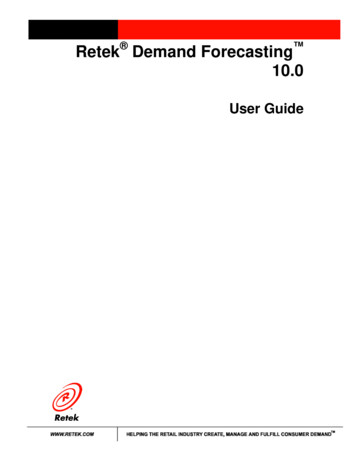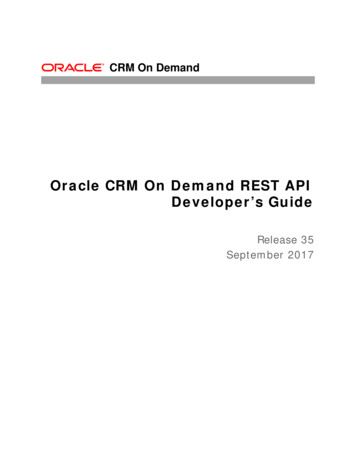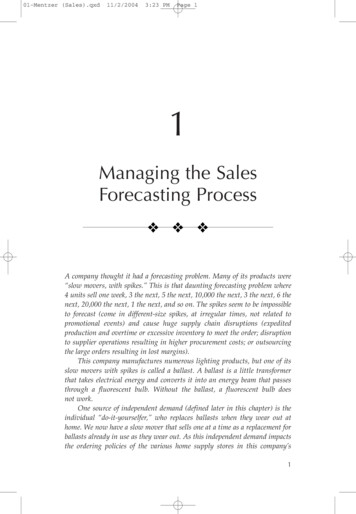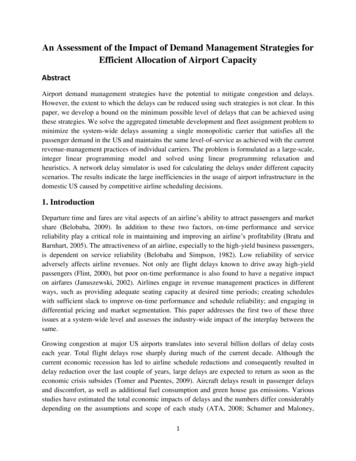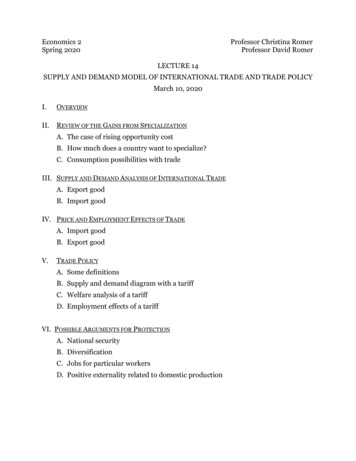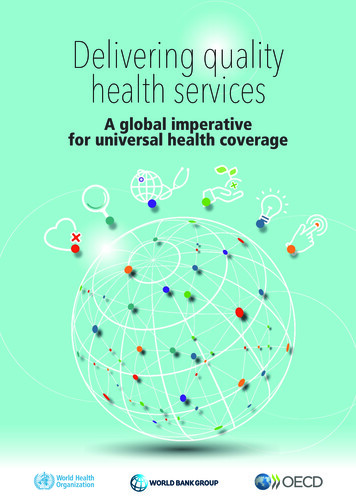
Transcription
welcome to brighterHealth on DemandDelivering the benefitsemployees want nowUS ResultsOur latest study of over 14,000 employeesacross the globe looked at how employers canpositively impact the health of their people. Doyou know which benefits matter most to youremployees now? Do you know how to bestsupport them in this challenging environment?About the surveyMercer’s Health on Demand research captures what employees want from theiremployer when it comes to support for their health and well-being.WhenSurvey was fielded March 6 – April 13, 2021Who14,096representative samplesof adult employeesResearch methods:Samples were collected with respect to national labor forcecharacteristics and based upon the most current OECDemployment statistics. The global results are weighted to1,000 to show an equal representation for each market.18-64years of ageWhereGlobal:14,096Brazil, Canada, China, Colombia, France, India,Indonesia, Italy, Mexico, Netherlands, Singapore,United Kingdom, United :8,061employees
Employer support mattersEmployers that provide meaningful support to all employees are helping to create amore resilient and loyal workforce—which in turn improves company performanceDuring the pandemic, employers proved they could make a meaningful difference.Of employees whoreported receivinggood or very goodsupport duringthe pandemic62%41%77%Of employees whoreported receivingpoor or fairsupport duringthe pandemic19%16%51%Feel their employercares about theirhealth and well-beingAre less likelyto leave theirjob as a resultFeel energizedat workOur report identifiedfive ways for employersto support employeehealth and well-being:Supportmomentsthat matterProvidevaried andvaluedbenefitsEnabledigital accessto healthcareWhat healthand well-beingstrategies showemployerstruly care?Support the moments that matterInsight:Employees who felt well-supported by employerswere less likely (25%) to view their pandemicexperience as mostly negative compared toemployees who did not feel supported (51%).Implication:Enhance physical, social, financialand emotional well-being supportto boost engagement andresilience.Support by the numbers:53%of employees reported that they received goodsupport from their employers during the pandemicInvestin mentalhealthDeliverbenefitsequitably
Provide varied and valued benefitsInsight:Employees with the most health and well-beingresources are 35 percentage points less likely to moveelsewhere, 27 pp more confident they can afford thehealthcare they need and 11 pp more energized thanthose offered no resources.Implication:The more diverse health, risk protection andwell-being resources you offer, the more loyaland productive your workforce will feel.Valued benefits by the numbers:59%of employees place the highest value on flexiblework as a way to support well-beingEnable digital access to healthcareInsight:Eight out of ten employees intend to keep usingdigital well-being solutions, such as video calls totheir doctor and well-being apps to help them findhealthcare support and self-manage conditions.Implication:Ensure benefit plans facilitate, coverand encourage virtual care if seamlessaccess is not otherwise available.Business leaders have a unique opportunity tocreate value for their organizations and theirpeople through innovative health solutions.The majority of employees trust their employersto deliver high-quality, convenient, affordable,and secure personal health solutions, andemployers should leverage that trust as theycreate their total rewards strategy.Telemedicine by the numbers:20%Kate Brown, Leader,Center for Health Innovation, Mercerof US employees used telemedicinefor the first time during thepandemic – and the great majoritywill continue to do soInvest in mental healthInsight:More than one in two in two employees report feeling atleast somewhat stressed every day. However, employeeswho feel supported by their employer are significantlyless likely to be highly or extremely stressed.Implication:Provide a comprehensive range of mental healthsupports to expand prevention and treatment,boost emotional health and reduce everydaystress levels.Stress by the numbers:59%of employees in the US who said they feel extremely,highly or somewhat stressed on a daily basis
Deliver benefits equitablyInsight:Higher-earners are better able to access medicalcoverage, income protection and mental healthcounselling than lower-earners. One in three singlemothers are not confident they can afford thehealthcare they and their family need.Implication:Consider the needs of disadvantaged groupsto ensure those most in need of support areeligible for and can access benefits.Affordability by the numbers:27%of employees are not confident they canafford the healthcare their family needsOffering benefits to show you careBenefits that employees only get to experience once they becomesick (like critical illness insurance) don’t have the same visibility assomething they get to experience more frequently—such as ahealthy work environment or gym benefits. That’s why it’s soessential to offer a mix of resources and solutions.Increase the portion of your workforce thatbelieves you care by providing:Virtual healthcareHelp finding and coordinating careVariedand valuedbenefitsInnovations to helpaddress health conditionsPractices to create a healthyand supportive environmentSupport with mental health,resilience and relationship issuesLeave and time-off policies to supportplanned and unplanned needsA rship:To address whatis importantpersonally andprofessionallyThat embraceshealth and safetyThoughtfulcommunications:Affordable,quality healthcare:Empathetic,Options and newrelatable, simple approaches to addresscommunicationsaccess, qualityand affordability
Flip the pyramid to providebenefits to meet the needsof the full workforceIt is important that benefits are designed tosupport all employees, including low wage earners,people of color, women, LGBTQ individuals,veterans, immigrants (including refugees andmigrant workers), and people with disabilities.Organizations should consider factors like healthcoverage affordability for individuals, safe workingconditions as well as benefits eligibility and scope.Those atthe top of thepyramid typicallyreceive the mostConsider addingnew supportsfor the fullworkforcevulnerable employeeshave unmet needsWhat benefits do YOUR employees want now?It’s imperative to listen to your employees.They are not just telling you what they need—they are giving you the formula to win.Find out what the Health on Demand survey cantell you about delivering effective employee healthand benefits programs in your organization.Read the Global Report to find out more.A business of Marsh McLennan 2021 Mercer LLC. All rights reserved.
Deliver benefits equitably Offering benefits to show you care Benefits that employees only get to experience once they become sick (like critical illness insurance) don't have the same visibility as something they get to experience more frequently—such as a healthy work environment or gym benefits. That's why it's so



